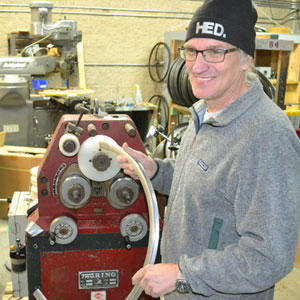
1 of 2 photos
<
>
HED's original patent, since expired, was on aero rims of a toroidal shape, that is, where the greatest width of the rim was not at the rim's leading edge, rather some distance back from the edge. HED's Stinger wheel was product originally associated with the patent's theme.
The patent was granted in the name of the late Steve Hed and HED employee Christopher Andrew (Dino) Edin.
The patent was granted in the name of the late Steve Hed and HED employee Christopher Andrew (Dino) Edin.

2 of 2 photos
<
>
This new patent (images from the patent are above and below), filed for in 2009 and finally granted after a long process, might be called Toroidal 2.0. What's intriguing is that it's not just a product being patented. It's a product plus a thing you attach to the product, i.e., the tire, that together create a shape that forms the basis of the patent. The patent isn't simply a product; it's both a product and a math problem.
“This patent allows you to predict and design-in a particular stall angle to a wheel based on the tangent angle between the rim edge and tire,” said Greg Kopecky, speaking on behalf of HED. “It's the key to having a fast wheel at the yaw angle(s) desired. It applies to both clinchers and tubulars of all rim depths.“
Could a wheel maker theoretically place an exceedingly wide or narrow tire on one of its wheels and demonstrate that its rim is not in violation of HED's patent? Yes. But this would violate the notion of the wheel's intended use, and “intended use” would form the basis of HED's contention. In order for this argument to prevail, one would assume that HED's patent would include the use of tires of widths commonly used in timed racing today, from 20mm to 25mm.
“This patent allows you to predict and design-in a particular stall angle to a wheel based on the tangent angle between the rim edge and tire,” said Greg Kopecky, speaking on behalf of HED. “It's the key to having a fast wheel at the yaw angle(s) desired. It applies to both clinchers and tubulars of all rim depths.“
Could a wheel maker theoretically place an exceedingly wide or narrow tire on one of its wheels and demonstrate that its rim is not in violation of HED's patent? Yes. But this would violate the notion of the wheel's intended use, and “intended use” would form the basis of HED's contention. In order for this argument to prevail, one would assume that HED's patent would include the use of tires of widths commonly used in timed racing today, from 20mm to 25mm.
PREV
NEXT
1 of 2 photos


>
<



